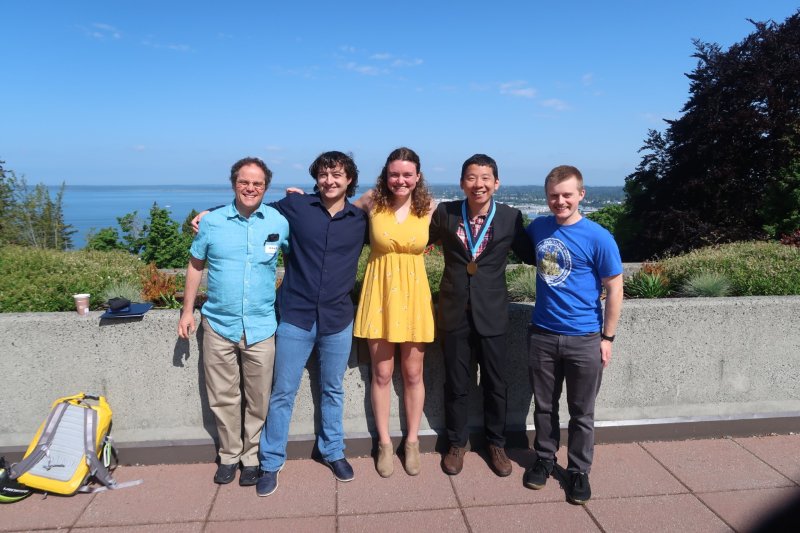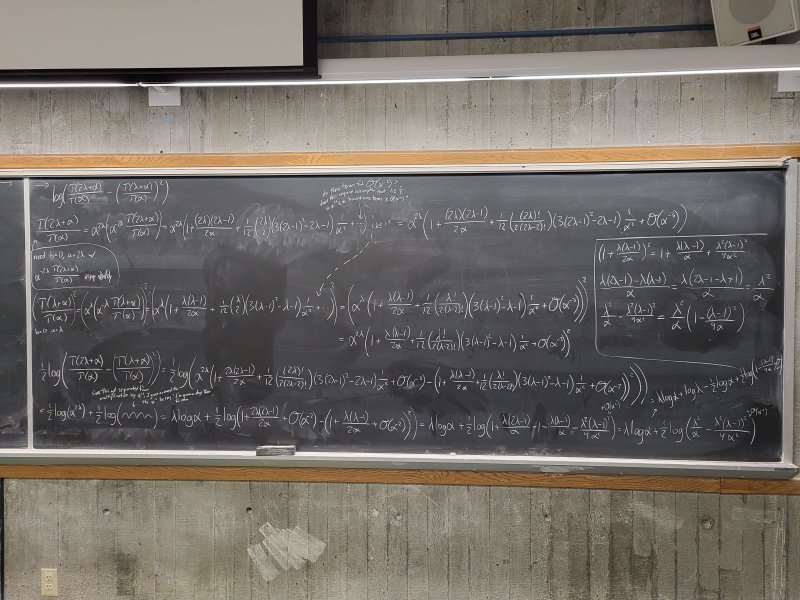Crunching Numbers: WWU undergrad Mayla Ward publishes new research on mathematical statistics
WWU senior Math and Data Science major Mayla Ward and Professor of Statistics Kimihiro Noguchi recently published their research on mathematical statistics, a rare achievement for undergraduate students in mathematics.
The paper, “Asymptotic optimality of the square-root transformation on the gamma distribution using the Kullback–Leibler information number criterion,” was published in the July edition of Statistics & Probability Letters.
Achieving publication as an undergraduate is uncommon because of the rigor and knowledge required for the highly theoretical mathematical proofs, Noguchi said.
“It is rare because the hurdle for doing new research in mathematics is high,” he said. “Producing novel mathematical results which are publishable in professional peer-reviewed journals usually requires PhD-level knowledge in mathematics, so finding a suitable new research topic for undergraduates which leads to publication is very hard.”
Noguchi was awarded the Arlan Norman Award for Excellence in Undergraduate Student Mentoring last year, and he attributes Ward’s excellent work as part of the reason he secured that award.
Ward’s research focused on how to best transform the gamma distribution so that it becomes approximately symmetrical in shape. The gamma distribution is commonly found in datasets from research in environmental science, meteorology, medical research, finance and engineering. This distribution appears skewed, which makes it difficult for researchers to determine the statistical significance of their data.
Ward showed that the square-root transformation is the best tool to transform gamma-distributed data under a certain condition because it becomes closest to two common symmetric distributions when scale parameters are fixed. These transformations can be applied for various practical uses, including in computer simulations of queuing processes to optimize telecommunications, project management and traffic control.
The derivations Ward made involved using different manipulations and substitutions to reduce the equations of the hypothesized solutions and often involved long hours of expanding, substituting, simplifying and repeating.
We need a bigger blackboard
Ward said she was interested in the project because of its balance of accessibility and rigor. Though the results required an in-depth understanding of probability theory, much of the practical work required little more than basic algebra and patience, allowing Ward to slowly learn the theory as she went.
“Mathematics research looks very different for different types of projects,” Ward said. “For this particular problem, most of our work involved careful algebraic manipulations of increasingly complicated equations. There were myriad opportunities for mistakes in our equations, and we had to do most work by hand due to the nature of asymptotic analysis.”
Ward, a native of Spokane, filled up the longest blackboards she could find in Bond Hall or spent hours writing out sheets of equations, she said.
“I easily spent 100 hours working on this project,” she said.
“The most rewarding part of this project was having the opportunity to take graduate classes in probability and statistics this year, where I encountered many of the concepts that I had already seen in my research,” Ward said. “I was able to quickly pick up on the concepts from these courses because of my experience thinking about probability problems in my research, and it was exciting to finally see how the niche concepts I had learned in my research were related to the rest of my mathematics background.”
Ward presented her research at the Pacific Inland Mathematics Undergraduate Conference at the University of Idaho on April 13 and will do so again at the Joint Statistical Meetings, the largest statistics conference in the world, in Portland, Oregon, during the first week of August. After graduating with a degree in mathematics and data science next winter, Ward plans to hike the Pacific Crest Trail before beginning a doctorate in mathematics in fall 2025.
“There are lots of exciting opportunities for research in mathematics and computer science in both industry and academia. I am confident that whichever path I follow, I will continue to seek out interesting puzzles and engross myself in tedious computation as I engage my passion for learning and math,” she said.
You can read Ward and Noguchi’s paper on ScienceDirect.

